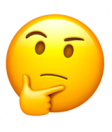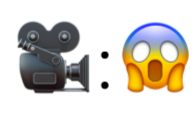


The Challenge
Using emojis only, communicate the name and plot of the most recent movie that you had the joy of viewing.
Seen below is my attempt to communicate the name of the last film that I was fortunate enough to watch on television a few days ago, can you figure it out?
Film Title:

Film Plot:

Without any context, it would be difficult for anyone to understand the meaning of my emoji movie title and plot (especially if they had never seen the movie!) I tried to be straightforward out of concern that adding too many elements would confuse the viewer.
Final Thoughts
It is intriguing to compare the cave paintings of our ancestors to the present era of emojis. The simplicity of an image can say so much without requiring much of any effort from the author. The simplicity of an emoji can also lead to confusion and sending the wrong message.
Being a middle-aged educator I often rely on my students to teach me about the latest meanings of emojis. Many of these meanings are obvious, such as a smiley face, while others are quite the opposite. When I see the emoji of a goat I think of the animal, but it is also commonly used to stand for the acronym, “GOAT: Greatest Of All Time”. It is easy to look up the literal meaning of the many emojis out there through websites such as Emojipedia (https://emojipedia.org/), but there are also alternative meanings that have developed over time as people gradually grow accustomed to using emojis for communication.
Kress (2005) mentions that the introduction of new forms of text such as images (i.e. emoticons) are depictions that may alter the way in which the text is received. Kress also questions how these new forms of text may alter a reader’s imaginative interpretations. I think the use of emoticons removes the creativity of one’s writing because it takes away personality. As I continue to teach my students online they continue to use emoticons to communicate during virtual meetings and by doing so blend together.
Reference
Kress (2005), Gains and losses: New forms of texts, knowledge, and learning. Computers and Composition, Vol. 2(1), 5-22.
